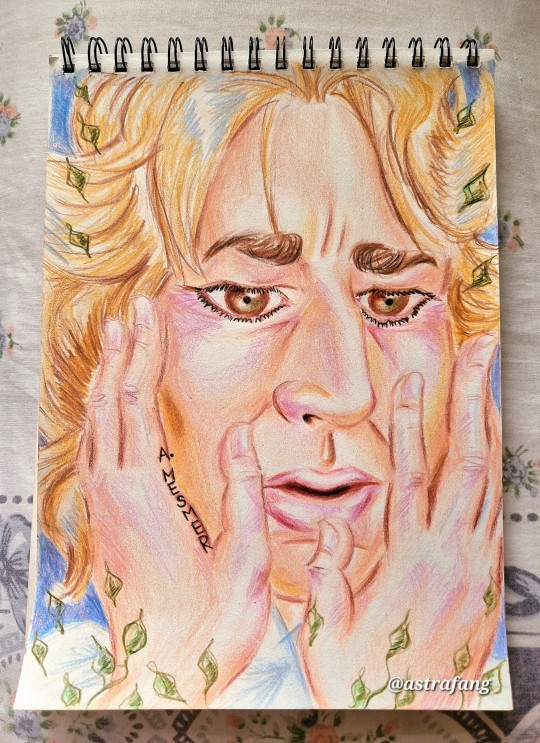#franz mesmer
Text
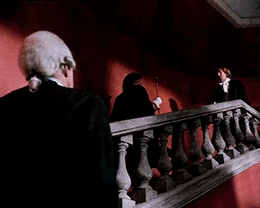
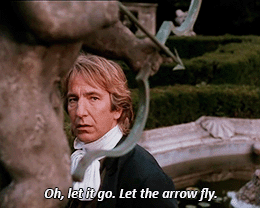





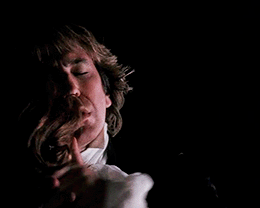

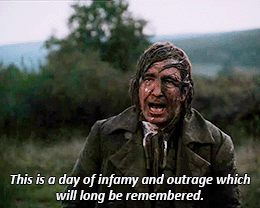
Alan Rickman filmography >> Mesmer (dir. Roger Spottiswoode, 1994) as Franz Anton Mesmer
139 notes
·
View notes
Text

it’s been suggested that the “peculiar sensations” and “convulsions” brought about by Mesmer’s *ahem* treatments, (that were very popular among women) were actually because he was making them orgasm.
21 notes
·
View notes
Text
Instagram Story from Chris Littler about the musical that he and Ellen Winter are writing with Jonathan


17 notes
·
View notes
Text
La Fayette on Animal Magnetism and Mesmerism
The Marquis de La Fayette has always been interest in science and how scientific discoveries could better everyday life. Despite this interest, or maybe because of it, La Fayette found himself in contact with scientific theories that sound rather strange to the modern ear. One of these was Animal Magnetism, also known as Mesmerism.
Animal Magnetism is a theory that was first published in 1779 by the German physician Franz Anton Mesmer. In short, proponents of this theory believe that all living things have a natural force and that there are magnetic fluids within the human body. They postulated a parallel between the magnetism in animals and in metals. This force and the fluids can be manipulated via different mechanism such as the lying on of hands. These manipulations can lead to positive effects like the curing of certain ailments or to harmful side effects like dizziness, heating of the body and seizures.
This is just a very superficial summary of Animal Magnetism for the sake of this post. The theory was very popular for a good one hundred years and is sometimes still used in the field of alternative medicine. Over the years different groups within the field of Animal Magnetism formed and these groups were characterized by (slightly) differencing theories, believes, practices, and varying terminologies. The theory was investigated by several of the leading scientific organizations of their day – with varying results.
Mesmer taught his theories to other people, his “disciples”, but kept the ultimate secrets to himself. La Fayette was one of his students and very, very enthusiastic about the whole matter. He wrote to George Washington on May 14, 1784:
A German doctor Called Mesmer Having Made the Greatest discovery Upon Magnetism Animal, He Has Instructed scholars, Among Whom Your Humble Servant is Called One of the Most Enthusiastic. I know as Much as Any Conjurer Ever did, which Remind's me of our old friend's at Fiskills Enterwiew with the devil that Made us laugh So Much at His House, and Before I Go, I will Get leave to let You into the Secret of Mesmer, which You May depend Upon, is a Grand philosophical discovery.
Idzerda Stanley J. et al., editors, Lafayette in the Age of the American Revolution: Selected Letters and Papers, 1776–1790, Volume 5, January 4, 1782‑December 29, 1785, Cornell University Press, 1983, p. 216.
Mesmer and his students gathered in the Rue de Coq Héron in Paris. In 1784 one of Mesmer’s students, Deslon, left the group to set up a rivaling group that did more or less the same as Mesmer’s group did. When the French King ordered a commission (of which Benjamin Franklin was a member) to investigate the claims made, Mesmer refused to appear in front of the committee and Deslon used this as his chance to present himself as the true expert on Animal Magnetism.
La Fayette certainly had opinions about this whole affair and wrote to Benjamin Franklin on May 20, 1784:
That Mesmer is the true preacher of Magnetism Animal, to Which By the Way He Has Been Much Helped By Your electric discoveries, is a truth which No Body Will deny. That Deslon Has treacherously Broken His faith, trampled Upon the Most Sacred Engagements is a More disputable. That While Mesmer Intended Acquiring a great glory and a great fortune, He Has not Been Such a fool as to Impart His Whole System to One Man who Might Claim a share in the Honour and Profit is also pretty Clear. That Baron de Breteuil, out of a private picque to Mesmer, Has Sent to Deslon, in order to know Mesmer'sdoctrine which does not Exist, and that what May Be known of the doctrine will Be Either Betraied By Deslon, or Stolen out By private Spies, are also pretty clear to Every Mind. Now, My dear Sir, instead of Helping to those transactions, don't You think the Commissaries, to whom the World Considers you as a president, Had Better Report. That What they Have Seen Gives them the idea of a Great discovery, But that Mesmer Being the Author of it, He is the fountain Head to which You Must Apply—that Sciences and letters are frighted a way By the Hand of despotism—But that, in order to Come to the whole truth, Commissaries Must plainly, and Oppenly Go to Mr. Mesmer, and in the Same way as other people, do, Be Regularly let By Him Into His whole System. Upon that I Have not Spoken to Mesmer. But I would Be Sorry to See a traitor triumph over an Honest man—and I am Sure You May Give a Good turn to the affair.
Idzerda Stanley J. et al., editors, Lafayette in the Age of the American Revolution: Selected Letters and Papers, 1776–1790, Volume 5, January 4, 1782‑December 29, 1785, Cornell University Press, 1983, p. 220-222.
La Fayette’s enthusiasm for Mesmer’s theories was not limited to a theoretical approach. He very much sought to implement Mesmer’s teaching in day-to-day life. On August 12, 1784, he gave a two-hour long speech about Animal Magnetism to the American Philosophical Society. Prior to that, on the ship that brought him to America, he tried to cure his seasickness with one of Mesmer’s methods. He wrote to his wife Adrienne on June 28, 1784:
As long as I stay quiet, I shall suffer only what my whole mental and physical being will always suffer at being confined. But when the Courier starts to move, I shall fortify myself with magnetism, camphor, and treacle tablets on an empty stomach, and drops of ether on a piece of sugar, all new remedies that I shall try and that will do nothing at all for me. In recommending that I embrace the mainmast, Mesmer did not know, and I forgot, that it is coated with tar up to a certain height, and hugging it is absolutely impossible without getting tarred from head to foot.
Idzerda Stanley J. et al., editors, Lafayette in the Age of the American Revolution: Selected Letters and Papers, 1776–1790, Volume 5, January 4, 1782‑December 29, 1785, Cornell University Press, 1983, p. 231.
La Fayette was very interested in visiting a settlement of Shaker (a religious group) while in America since he believed that some of the Shaker’s practices were very similar to those of Animal Magnetism. One of his travel companions, Barbé de Marbois’s, notes in his journal:
We had heard a great deal about the American Shakers. For the three years that that sect had been growing in America, we had all wanted to see their principal settlement, which was not far from our route; and in addition to ordinary motives of curiosity, M. le Marquis de Lafayette wished to examine at firsthand phenomena that seemed very similar to those associated with Mesmer, with whom he studied. It was a Sunday. We left for Niskayuna, the place of their assembly. It is difficult to reach this village, which is in the middle of the woods, and we were obliged to go to see them on foot. At great distance we heard a slow, melancholy, but rather melodious music. All the voices were singing in unison or in octaves, and the effect was rather pleasing at a distance. We found the Shakers in the midst of their religious devotions … M. le Marquis de Lafayette, one of Dr. Mesmer’s adepts, wanted to try out animal magnetism on one of them. While he was magnetizing him with all his power, the poor man told us his story: “One day I fell from my wagon,” he told us. “I injured my leg very badly. A kind man came to my aid while I was unconscious. When I awoke, I found myself healed. I experienced a complete change in my sentiments and beliefs. I renounced the world and its ways. I followed those of these perfect men, and from that moment, I have been infinitely happy.” This chosen one was a person of extreme simplicity, and while M. le Marquis de Lafayette was trying without success the effects of magnetism on all his poles, one of the old men—uneasy about what might result from it—came to us. He asked whether we were acting in the name of a good spirit or of an evil spirit. "Assuredly," said M. le Marquis de Lafayette, "it is in the name of a good spirit." Once he had made this avowal, you can well imagine that the Shaker pressed us hard. He even tried to persuade us to become his proselytes, and we were unable to shake him off until we left Niskayuna to continue our voyage …
Idzerda Stanley J. et al., editors, Lafayette in the Age of the American Revolution: Selected Letters and Papers, 1776–1790, Volume 5, January 4, 1782‑December 29, 1785, Cornell University Press, 1983, p. 245.
With time and other things to occupy himself with, La Fayette’s interest faded. But as far as I can tell, it never completely left him. By the time of his death in 1834, the theory was still popular.
#marquis de lafayette#la fayette#french history#american history#history#letter#george washington#benjamin franklin#adrienne de noailles#adrienne de la fayette#franz anton mesmer#animal magnetism#mesmerism#1779#1782#shakers#barbé de marbois
14 notes
·
View notes
Text
“Viaggio nella Storia: L’Ipnosi e la Sua Influenza sulla Medicina 🕰️💊
L’ipnosi, un fenomeno intrigante che ha attraversato secoli, ha radici profonde nella storia della medicina. Esploriamo il suo affascinante percorso attraverso il tempo.
1. Antiche Radici e Magnetismo Animale
Le origini dell’ipnosi risalgono ai tempi antichi, ma fu Franz Mesmer, un medico austriaco del XVIII secolo, a portare l’attenzione su quello che chiamò il “magnetismo animale”. Mesmer sosteneva che il corpo umano fosse permeato da un fluido magnetico e che la sua manipolazione potesse curare malattie. Sebbene la sua teoria fosse discutibile, Mesmer ha introdotto il concetto di un’energia influente sulla mente e sul corpo, un tema centrale nell’ipnosi.
2. James Braid e l’Emergenza dell’Ipnosi Scientifica
Nel XIX secolo, James Braid, un medico scozzese, riconsiderò il concetto di Mesmer e lo ribattezzò “ipnosi”, derivato dal termine greco per sonno. Braid fu il primo a definire l’ipnosi come uno stato mentale specifico, dissociato dal sonno, e a esplorarne le applicazioni mediche.
3. Freud, Charcot e l’Ipnosi nell’Età Moderna
Sigmund Freud, il padre della psicoanalisi, inizialmente utilizzò l’ipnosi nella sua pratica terapeutica, ma alla fine sviluppò altre tecniche. Nel frattempo, Jean-Martin Charcot, un neurologo francese, contribuì allo studio dell’ipnosi nella comprensione dei disturbi neurologici. Questa era segnò una fase di crescita e riconoscimento dell’ipnosi nella comunità scientifica.
4. Ipnosi Contemporanea e Terapie Integrative
Nel XX secolo, l’ipnosi divenne sempre più riconosciuta come una pratica terapeutica legittima. Molti professionisti medici e psicologi hanno integrato l’ipnosi nei loro approcci per trattare disturbi come ansia, dolore cronico e disturbi del sonno. Oggi, l’ipnosi è spesso utilizzata come strumento complementare nella gestione del dolore, nella terapia cognitivo-comportamentale e in molte altre discipline.
In conclusione, la storia dell’ipnosi è una ricca trama di sviluppo scientifico e scoperte nell’ambito medico. Da Mesmer a oggi, l’ipnosi continua a offrire nuovi orizzonti nel trattamento di diverse condizioni, dimostrando che il potere della mente può essere un alleato prezioso nella cura della salute. 🌐🧠 #StoriaDellIpnosi #MedicinaEmente #CurareConLaMente”

#storia#storia dell’ipnosi#charcot#franz Anto e MESMER#Freud#autoipnosidcs#autoipnosi#ipnosidcs#autoipnosi dcs#dcs metodo#dr claudio saracino#benessere dcs#droga#autostima#calcio
0 notes
Text
Early Works on Animal Magnetism
Mesmer’s interest in invisible forces found concrete expression in his early medical practice, where he experimented with using iron magnets to treat illness.
Later, he used new techniques which involved “magnetic passes” or sweeping movements of the hands to direct magnetic fluid to diseased parts of the patient’s body. Using these methods, Mesmer performed some remarkable cures in Austria, Germany and France.
He attempted to gain acceptance for his theory of animal magnetism from the medical establishment of Vienna, then in Paris.
0 notes
Text

https://en.m.wiktionary.org/wiki/mesmerism
1 note
·
View note
Text

Thoughts on the Shadow of the Erdtree's first trailer
You know I have to, lol.
I'm going to avoid anything that's likely well-trodden territory, so a lot of this will pertain to past theories of mine, or just general ramblings. It's not going to be all that organized, but here goes.



The "Ring of Miquella"
A loooong long time ago, I settled on a theory that the Great Rune of the Unborn was actually Miquella's rightful Great Rune, but given to Rennala in the form of the Amber Egg by Radagon before he was even born. The Great Rune itself matches the shape of his twin sister, Malenia's, albeit smaller and of pure gold, akin to Miquella's traits as an eternally youthful demigod of Unalloyed Gold. Miquella's role in the base game as a comatose Empyrean who failed to be reborn further relates to the Great Rune of the Unborn, as it is required to perfect the process, otherwise the reborn loses their memory as if to a deepening slumber.
I take this as a damning vindication, lol.
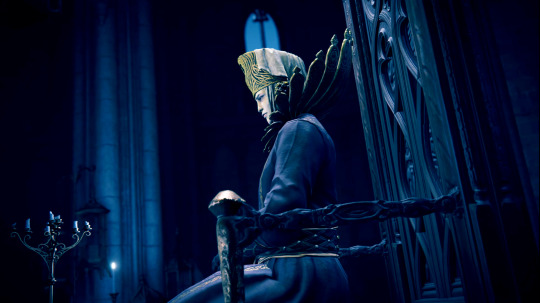

Possible insight into the Cuckoo
Some have pointed out this character's evident relation to Raya Lucaria. Already, many have jumped to the conclusion that she must be a Carian based on the crystals and bird cages strewn about their chamber, but I don't actually think this is certain. These could also pertain to the Cuckoo, the original headmasters of Raya Lucaria. (After all, some of the cages in Raya Lucaria even contain warbling cuckoo birds.)
The Cuckoo are a somewhat overlooked dynasty, but there are slight hints that they may be related to the Nox in some way. It would be very interesting if we got to see some semblence of their former glory, before Rennala descended from the Mountaintops and overtook the academy. Perhaps then we might glean more on the primordial current so coveted by Lusat, Azur, and Sellen?

Messmer the Impaler
Where to even begin with this latest addition to Miyazaki's divine freakshow.
The first thing that jumps out to me is their name, "Messmer." Given the context of Miquella, St. Trina, and the yet underexplored concept of dreams, I'm reminded of 18th century physician Franz Mesmer, the pioneer of hypnotism. Mesmer dabbled in astronomy, and believed all beings were connected to the inanimate world through "animal magnetism." In his practice, he developed the first inklings of hypnotic suggestion, then known as Mesmerism.
The use of serpents in Messmer's designs could relate him to the Eternal Serpent that wished to devour the Erdtree and the world, which later became Rykard's obsession. In fact, the red flame Messmer channels bears a striking chromatic resemblance to the Taker's Flames. Perhaps he could be related to the ancient heretical cult of Mt. Gelmir...? (I still wonder what the hell is going on with the volcano's peak, as it does resemble a gnarled tree.)
The red hair would relate this figure to the Fire Giants and/or the Fire Monks, which is particularly strange. Then again, we do find the Fire Giants impaled on briars, though these supposedly pertain to Radagon himself.
The most enthralling detail to me, however, is Messmer's sealed eye.

Eyes are diegetically symbolic, and thus far we've met two characters with sealed eyes: Melina and Lunar Princess Ranni. It's likely that both of these characters are Empyreans, and as we've never seen any other Empyreans' eyes (Malenia's are covered by rotten scales, and there's no official depiction of Marika with her eyes open or intact), I take it to be a cosmological signifier of their divine status. If so, might Messmer be yet another Empyrean...? Their open eye is golden and draconic, though I'm not sure what this could entail.
I'm sure I'll be mulling it over for a while, lol.

Other random thoughts
The wolf-lion-mage thing is frickin' sweet, but I like that it appears to be a puppet of sorts, and that whatever puppeteers it is relatively human.
HIGH MONK
CRUCIBLE WINGS
SPECIAL DUAL-WIELDED WEAPONS??
BUTTERFLY MAGIC (purple....)
That definitely looks like Deathroot crawling across the landscape
RUNEBEAR INCANT (so probably even crazier runebears lmao)
Just kind of gesturing at everything because what the hell how is this even the same game it looks insane and fuckin JUICY
June isn't all that far off...
115 notes
·
View notes
Note
Is hypnotism magic? How do those two concepts relate and interact?
Franz Mesmer is his own whole can of magic worms lmao. The two are closely related.
181 notes
·
View notes
Note
feel free to ignore because i know you get one million asks per day but if you have the chance i would welcome any + all thoughts on lolita 👀
no please im dying to talk about lolita
so, i feel like i have to start with the critique of psychiatry, specifically psychoanalysis, that runs through the entire book. humbert tells us that he revels in making himself obscure to psychiatrists by lying to them; the extent of the actual deceit is ofc unclear because he's an unreliable narrator, but certainly it's true that psychoanalysis fails to 'fix' humbert or to save dolores, most obviously when the beardsley teachers believe she's psychosexually underdeveloped and approach humbert to discuss it. humbert delights in pointing out that the patterns the analyst seeks in human behaviour and desires simply fail, again and again, to correct or prevent his preying on children; also, obviously, psychiatry operates within / continuous to the institution of the family, and so is often categorically incapable of preventing or even perceiving violence that occurs as a result of a familial relationship, as in humbert's use of the father role to enable his rape of dolores.
and like, sure, humbert has plenty of self-interested reason to disdain psychoanalysis, as a science that positions itself as potentially aiming to prevent his sexual abuse. but the reasons he generally gives for his criticism are clustered around the idea that psychoanalysis seeks patterns where there are none to be found, and makes meaning out of nothing (eg, "the scholastic rigamarole and standardised symbols of the psychoanalytic racket"). of course, in truth humbert himself seeks patterns and order constantly, from his emphasis on his european morals and the contrast to the unruly america (particularly the western states), to his supposed talent in seeing the stratagems of chess laid out neatly on the board in contrast to gaston perceiving "all ooze and squidcloud," to his use of tennis as a kind of disciplinary measure with dolores, aimed at making the "symmetry" of the court bring out the "harmonies latent in her." and, nabokov goes out of his way to tell us that humbert also retains belief in those two other viennese sciences of pattern-seeking par excellence: phrenology (historically more inclusive a science than how we think of it today, and very much growing from and encompassing physiognomy, to which humbert makes at least one explicit reference and on which he implicitly relies constantly throughout the book) and mesmerism (encountered in this time period as the 'hypnotism' humbert speaks highly of numerous times, along with the fact that at the very end of the book he tells us that one pseudonym he considered using was "mesmer mesmer", a reference to franz mesmer).
this got me thinking about what nabokov was trying to convey by giving us this very clear picture of humbert as someone who, though hostile to psychoanalysis in particular, is generally not only amenable to this type of pattern-seeking and narrativising but often actually dependent on it. and then i thought, well, it's not really about order or patterns in themselves at all. what's at stake for humbert, and for us as readers, is the power relations underlying various discourses of social order, and the pattern of control thus enabled. humbert's problem with psychoanalysis is that it positions itself, however ineffectually, as trying to create subjects who are sexually 'developed' and 'healthy', which he encounters as being directly oppositional to his own interest in preying on girls, and his attempts to make dolores into lolita, whom he wants to be cultured and mannered rather than unruly—but the sense of rule and order needs to come from himself, not from the abstract and distant authority that the analyst speaks on behalf of. so, the critique of psychoanalysis is twofold. 1) analysts fail to see the danger of humbert or the rape of dolores even when it's occurring almost in front of them; but, 2) even if they were to perceive these things, what the analyst can offer is really just an alternate version of the same sort of disciplinary ordering that humbert tries to subject dolores to, only with the definition of order or normality or health coming from a whole social matrix rather than from one man. analogously, humbert can wield the threat of child protective services against dolores, because although it would remove her from his control, she would be at the mercy of a different source of violence, namely the state. in this way, of course, humbert's abuse and rape of dolores is not actually oppositional to but metonymic of these broader structures of violence, control, and coercion, which fits also with the way we can read his use of the father role as pointing to the violence inherent to the patriarchal family structure and specifically the father-daughter relationship.
this sort of interrogation of the relationship between institutional violence and coercion and humbert's rape of dolores is pushed even further, i think, when we consider psychiatry as a subset of medical practice, and medicine's role in the book. most obviously, there is humbert's use of psychotropic drugs in his attempt to rape dolores the first time; drugging her is something he previously fantasised about and practiced by administering sleeping pills to charlotte. but the book is also littered with medical intervention that humbert perceives as akin to, or symbolic of, sexual violation. when humbert visits quilty's dentist uncle, for example, he says that the uncle perceived his mouth as "a splendid cave full of priceless treasures", but that humbert "denied him access". his arrest he describes as "surrendering like a patient". describing the moments of "paradise" he experienced sometimes after raping dolores, he compares her to "a little patient still in the confusion of a drug after a major operation". this obviously recalls humbert's own willingness to drug dolores in order to rape her; however, it also suggests that there is a very real way in which medical intervention—frequently coercive, invasive, authoritarian, &c—is itself already a site of bodily violation and violence. once again, the institution or the social ordering of a relationship—doctor–patient, father–daughter—is an obfuscatory device. the relation creates and enables violence, then defines it out of existence. in 'lolita', humbert's ultimate use of this process is through the re-naming of dolores and his continuous efforts to force her to become the 'nymphet', a figure that replaces 'child' and re-defines her as seductive, otherworldly, &c.
i think this is also something nabokov plays with in humbert's and dolores's travels westward. humbert sees america generally as coarser, less well-mannered, and more unruly than the continent. thus, he perceives their travels as taking them outside the bounds of the social limitations and norms that could prevent or frown upon his rape of dolores: the school, the neighbours, and so forth. but this is clearly at odds with both his continued reliance on the father–daughter relationship in order to abuse dolores, and the fact that westward expansion never simply meant encountering a 'wilderness', but overruling whatever did exist before and installing the very social forms and institutions that, in the novel, enable humbert's rape and abuse of dolores: the state, the family, and so forth. in other words, humbert perceives his movement west as escaping some strictures of modern sexual mores and interference; in his mind, then, the 'conquering' of land is continuous with the sexual abuse of a girl. what nabokov points out is that, although humbert is not in fact 'escaping' into a wilder world, he is in some ways correct to perceive this broader project of expansion west as enabling rape, situated in the context of the broader violence of such expansion. for nabokov this can all be contextualised, i think, as part of the overarching centuries-long post-enlightenment discourses of ordering, controlling, and disciplining nature (which itself is often spoken of in the feminine), where humbert embraces and extolls such acts of discipline and control so long as he is their director, and opposes them only insofar as he perceives them as challenging his own authority—as in the case of his fear and disdain of psychoanalysis.
also: since you are the person who introduced me to tlt–lolita readings, i'm not sure if you've written about this, but it did seem to me like the narrative use of swordfighting in 'gideon the ninth' is expanding on how nabokov uses tennis in 'lolita'. i'm thinking of tennis as a measure by which humbert tries to discipline dolores, hence the emphasis on symmetry and, eg, his pride at having apparently taught her the "continental method" of retrieving a tennis ball with her racket/foot: again, trying to instill refined and ordered european manners over what he sees as her unruly american nature. in comparison, for gideon, refining her swordfighting and learning new techniques is essentially training her body to be first a soldier in the cohort, then a cavalier destined for the 'cannibalistic' death of harrow's lyctorhood. so, the way that humbert is trying to destroy dolores and replace her with lolita, gideon is being trained to become a weapon and a tool of empire (also re-named), with muir again suggesting that these forms of violence are continuous, can represent one another in a narrative, and exist in a causal relation where imperial expansion creates sexual violence. i also suspect there's a close read to be done here comparing the passages that describe dolores's movements on the tennis court to the ones in gtn focussing on gideon's and the other cavaliers' exact fighting techniques; i'm not sure what a person would find exactly lol, but i suspect there's something interesting there.
#ok sometimes when i post i feel like that pascal quote where he's like sorry i wrote you a long letter i didn't have time to shorten it lol#lolita
148 notes
·
View notes
Text
Energy Across Cultures Pt 1 - Coin's Notes
I ended up having to break this up into a multipart series, otherwise, the post would have ended up way too long. Here is part one of an overview of energy across cultures!


What is energy?
In scientific terms, such as physics, energy is “the capacity for doing work” (britannica) and it exists in various forms such as potential, kinetic, thermal, electrical, chemical, nuclear, and so on.
In esoteric terms, however, energy takes on a different and yet very similar meaning. Many cultures and religions have different views on what energy is and how it works, some of them more different than others.
Here are just a few ways that energy is viewed throughout various cultures and history:
Subtle Body
The subtle body is the English term for a belief seen across many cultures. While there are similarities in how each culture or practice experiences and defines the subtle body, they should all be treated as separate and distinct in their own right, using the correct names when talking about them in the context of the cultures and practices respectively.
This idea of a semi-physical semi-spiritual aspect of the human body is seen mostly in Asian cultures such as Taoism, Hinduism, Buddhism, and Jainism—though not every branch may accept this belief.
That said, there are some Western practices that have adopted the idea of a subtle body. Many people’s personal practices may employ this belief as well.
There are those who consider the subtle body as the vehicle in which one astral projects, seeing it as a non-physical but not entirely spiritual existence.
Animal magnetism
Also called Mesmerism after the German doctor Franz Anton Mesmer who developed the theory, animal magnetism is the theory that an invisible force naturally permeates every living thing. Mesmer would claim that this force could be manipulated and could have physical effects—including healing. According to Mesmer, this force, or “vital fluid” flowed through all living things and was made from fire, air, and spirit; vital fluid, as with other fluids, tends to maintain an equilibrium.
When out of equilibrium this imbalance could cause a range of problems, from mental issues such as depression or anxiety, to physical issues like nausea and other illnesses. This could be fixed by putting the body back toward equilibrium.
He began at first by using actual magnets, later abandoning this in favor of human touch. Mesmer would stroke or make sweeping motions above the patient’s limbs to manipulate their vital fluid and return it to equilibrium.
Aura
An aura is generally seen as a sort of energy field that enclosed a human, animal, or object. Some describe the aura as a subtle body. This subtle emanation of the body may change in size, shape, or color according to some beliefs.
The etymology of the word comes from Latin and Ancient Greek aura, meaning “breeze” or “breath” and would later come to mean “gentle breeze” in Middle English before turning into its modern definition.
This concept was spearheaded by Charles Webster Leadbeater, a member of the Theosophical Society. He introduced the modern idea of the aura in his book “The Inner Life” by incorporating chakras from Tantric beliefs. Leadbeater reinterpreted the beliefs of Tantric philosophy and mixed them with his own ideas all the while not acknowledging the sources.
Ether
Ether, also called aether or ather, is sometimes seen as the “fifth element” or quintessence. Originally Aether was the Ancient Greek concept (and later the personification) of the “upper air”, what we now know of as the atmosphere. This element was the material element of the cosmos.
Even as time passed it was seen as the material that fills the “space” in the universe not taken up but celestial bodies or other forms.
This term would later be borrowed and transformed by a number of scientists and theologists. Namely Thomas Edison, Sir Isaac Newton, and more.
Chakras
Chakras (Sanskrit चक्र; Romanized as cakkra; possibly wheel, discus, or cycle) are psychic or energy centers across the body, how many chakras vary by sect and personal practice. Unfortunately, the concept of chakras has been heavily misappropriated--see above where I mention Leadbeater.
Originally the concept of chakras came from the practice of Tantric Yoga and gained popularity, eventually reaching Western occultism.
Please read this post, this post, and this post to get a clearer understanding of chakras.

Enjoy my posts? Consider leaving me a tip on my ko-fi!~
135 notes
·
View notes
Text
One thing I will never get over is the origin of the word "mesmerizing". It sounds so etheral and like it should have it's origin in old greek or latin, but instead it only goes back to the year 1819 and this guy:

Franz Anton Mesmer (1734 - 1815), a German/Austrian phyisican who developed the theory of what he called "animal magnetism", an invisible natural force possed by all living things. Based on that theory, he claimed to be able to heal basically any ailment by the use of magnetic healing streams.
His methods included, among others, attaching steal magnets to a patient (during a seizure), the lying on of hands and group therapy sessions. For those, he had people sit around a tub filled with sand or iron fillings (serving as "storage" for the magnetic energy) and hold ropes connected to it. Many of thess meetings, he concluded by playing on a glass harmonica.
After he had been quite "successful" with this pratice in Vienna for a while, a commission set up by the empress of Austria declared Mesmer a fraud in 1777, and he moved to Paris. There, he continued where had he left off, became successful again quickly - and was found to be a fraud by another commission, this time set up by the French crown in 1784.
And the word mesmerizing goes back to him, out of all things and people. Which is the reason I cannot ever look at it again the same way, and I hope now you won't as well.
#History#langblr#I don't know how to tag this I have no idea what I spent an hour putting this together
188 notes
·
View notes
Text
nothing funnier to me than the use of 'animal magnetism' as a marketing term that's supposed to be suggest sexiness like some kind of werewolf romance cultural shorthand when the origin of the term was dr franz mesmer (famous hypnosis quack who gave us the term mesmerize) trying to convince people he could heal them with magnets. like he meant literal magnetism. he meant literally putting magnets on you, the human animal. animal magnetism. EXTREMELY straightforward in the way shouting FIRE BEAM AND YOU EXPLODE on the playground is straightforward
42 notes
·
View notes
Text
With all the dream and sleep stuff going on, there’s no way Mesmer the Impaler is not named after Franz Mesmer, right?
13 notes
·
View notes
Text
oh, to be a 1700s german physician named Franz Anton Mesmer often finding himself on the fringes of western medicine
6 notes
·
View notes
